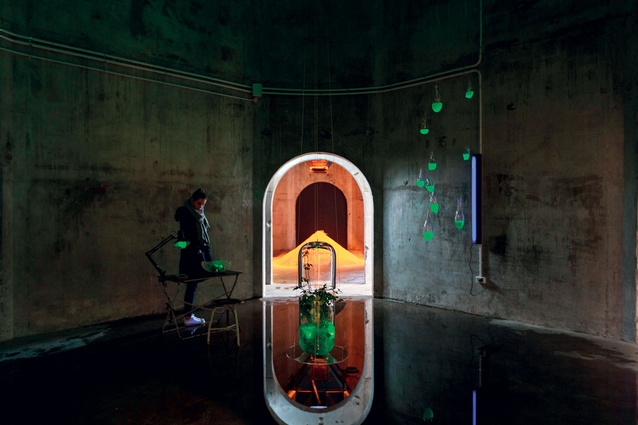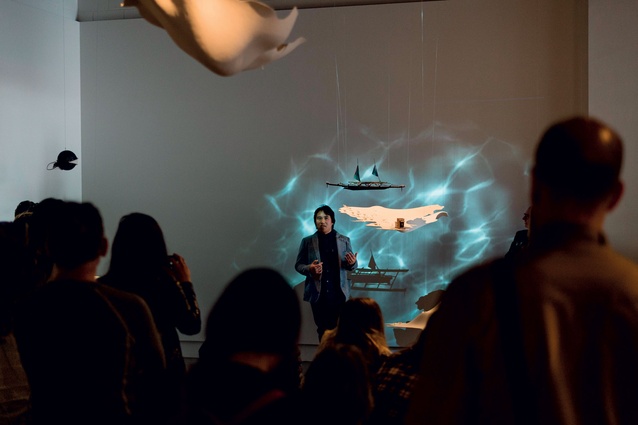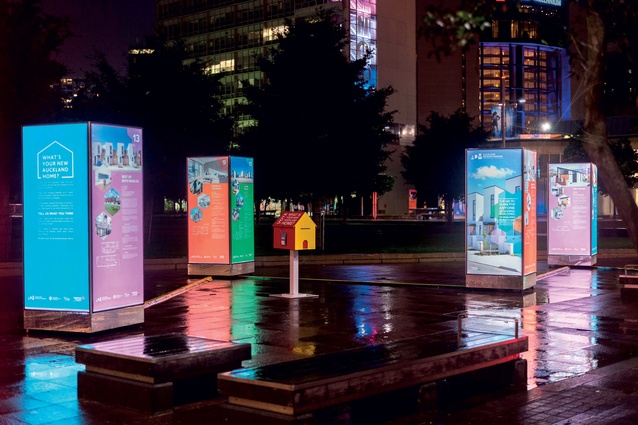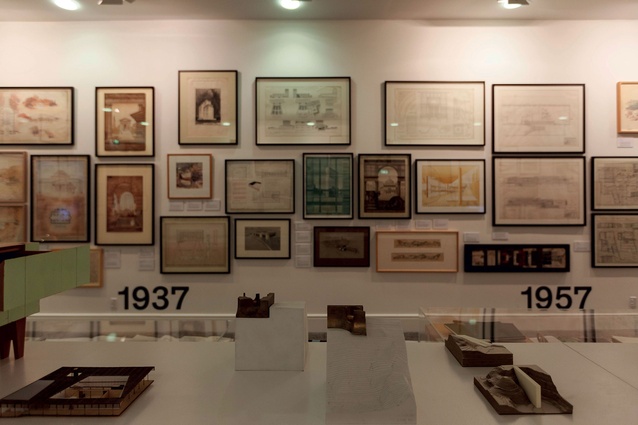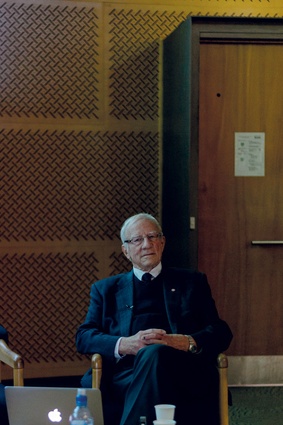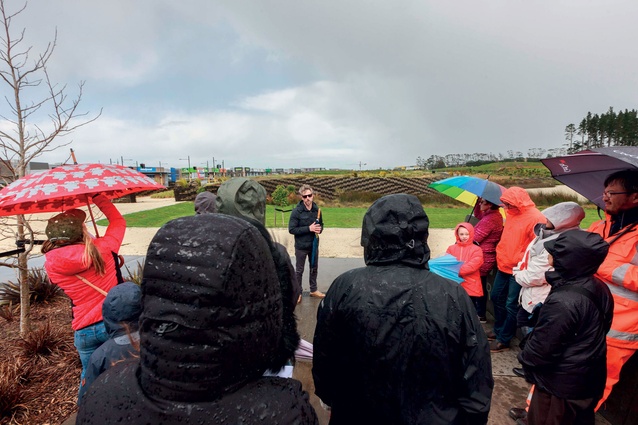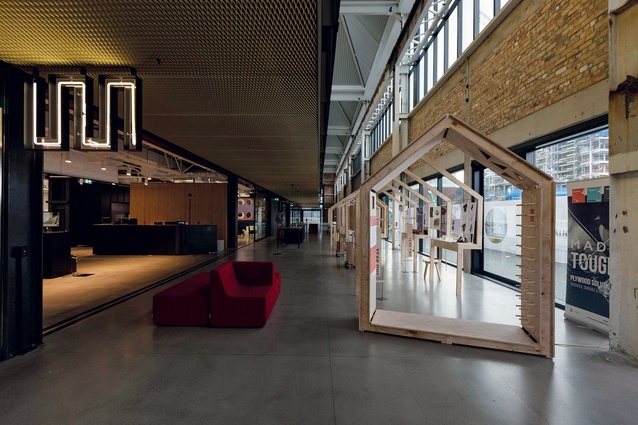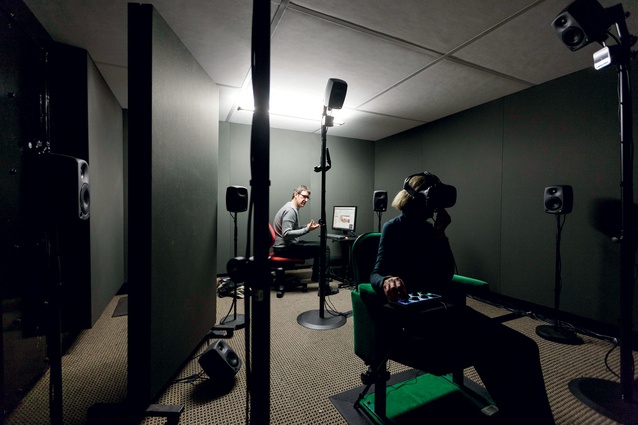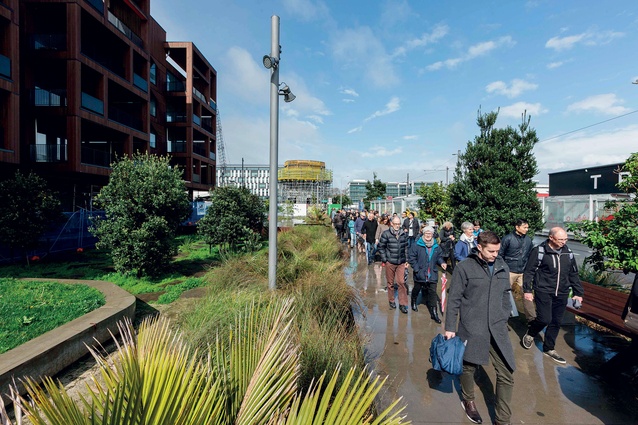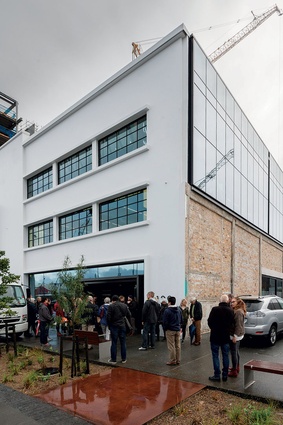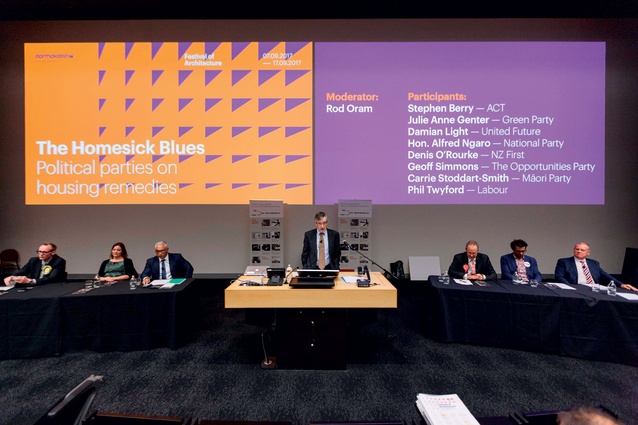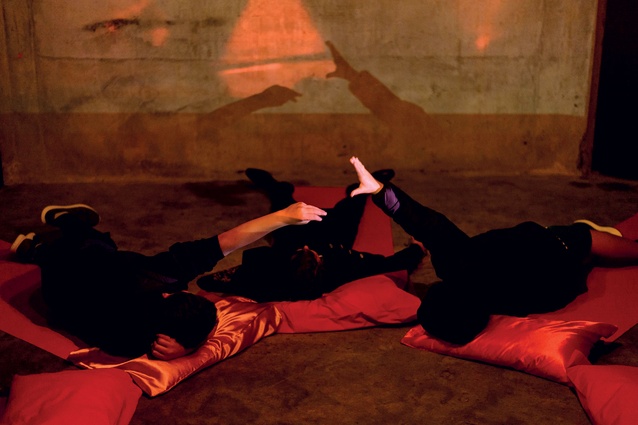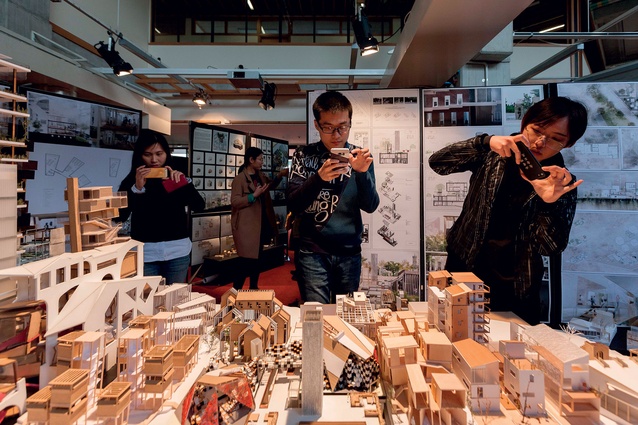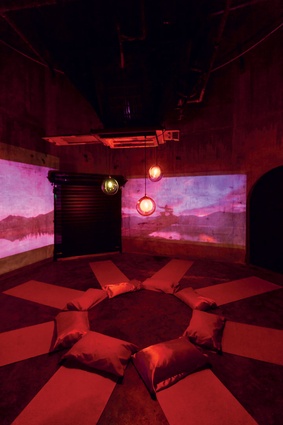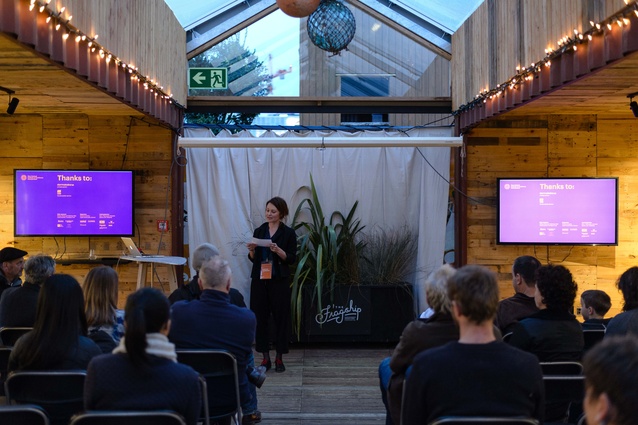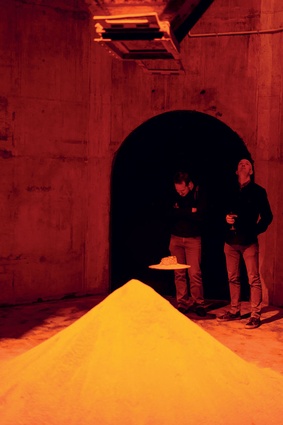Festival of Architecture: AKL report
The Festival of Architecture was aimed at both the public and the profession this year, with a wide range of activities held in Auckland, Wellington, Christchurch and other centres. Hosted by each city’s branch of the NZIA and its numerous supporters, the event ran from 19 to 25 September. Here, Joanna Hurst reports on Auckland’s festivities with photography by Joe Hockley.
Previously known as Architecture Week and largely run by the Auckland branch of the NZIA, the first Festival of Architecture sought to expand the remit, both temporally and geographically, with an expanded number of events around the country.
The festival coincided with the centenary of the Auckland Architecture School. It also coincided with a nationwide political event, and this coloured several of the presentations. The opening event at the Owen G Glenn Building at the Business School was titled The Homesick Blues: Political Debate and brought together eight speakers, a representative from each of the contesting political parties. The moderator, economist Rod Oram, deftly kept the discussion focused on housing and affordability, and allowed each speaker sufficient time to sway opinions in the audience.
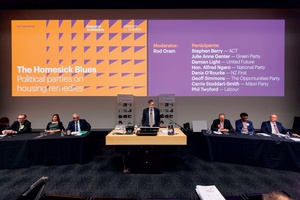
Quick-fire questions to round things up brought the biggest groan of the evening. In response to being asked to nominate a favourite public transport experience, Act Party’s Stephen Berry spoke of enjoying watching public transport while driving his car along the motorway… The issues were highlighted by a final question from the audience, asking each of the major party candidates to state their party’s position on the Tamaki Regeneration Project, a controversial redevelopment of existing state homes in Glen Innes. This brought a long response from National’s Alfred Ngaro. He spoke proudly of the achievements and his own involvement in consulting with local communities.
Phil Twyford from Labour then dropped in with: “Alfred, I was in a community meeting where you were shouted down by 500 people.” Best political put-down of the night. Phil Twyford also featured as the moderator for the Eagle versus Shark debate, where both teams seemed more focused on playing up to the moderator than discussing the serious topic presented to them; the proposition that ‘Engineers can design better affordable housing than architects’.
Peter Boardman, of Structure Design Engineers, was the most expressively gestural, repeatedly raising his arms skyward to demonstrate how engineers can respond to the need to build ‘tall’. Architect Michael O’Sullivan stole the show with his very cogent argument that engineers have a much greater capacity for technology, allowing for multiplication and prefabrication. Cars, for example: “we can all live in cars”. The large number of engineers in the audience meant the cheering response was about even, and the event was judged to be a draw.
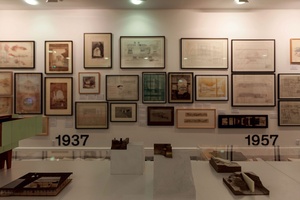
The Gus Fisher Gallery hosted the book launch for The Auckland School: 100 Years of Architecture and Planning, edited by Julia Gatley and Lucy Treep, which was launched in conjunction with the opening of the exhibition of 100 years of drawing. Arranged chronologically, the exhibition deserves a revisit as the large crowds at the opening prohibited a decent viewing.
Friday and Saturday also featured a symposium at the Architecture School, exploring the history and current practice of education in architecture and planning, and on Saturday night at the Pullman Hotel, the alumni gala dinner was the culmination of the university’s centenary celebrations, which featured a hearty and heart-felt speech from David Mitchell, but not enough dancing.
While the festival’s aim was to reach out to a wider audience than the usual design professionals, the make-up of the audiences at these events was, more often than not, the usual suspects. One event that drew a somewhat different group was From the Waste Up at the Sustainable Coastlines Building in Wynyard Quarter. On a very cold bleak night, a very hardy group, including a family of young children, were enlightened by four very different presentations, within the not-fully-contained-from-the-elements Flagship Building.
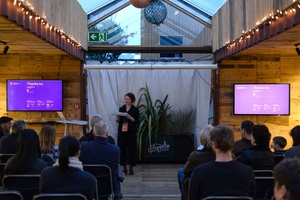
First up, Jerome Partington, Jasmax’s sustainability champion, gave a precis of the zero waste aspirations of the Living Building Challenge’s approach to waste management. Then, Mark Roberts, a waste-planning advisor from Auckland Council outlined a more down-home approach, which involved engaging local community in the demolition and redistribution of building waste as part of the restoration of the heritage Mount Roskill Borough Council Building.
The Ranui Community Centre was presented with joy and enthusiasm as an example of a community-led building project focused on reusing building waste. And the final speaker, Waveney Warth, delighted with her commitment to tackling waste in her own environment. She and her partner committed to a year of zero waste, then made it all too real by presenting their commitment to media man John Campbell on national television. Several years down the track, her Rubbish Free blog is a ‘how-to’ page for living a life without rubbish.
Opening on Friday night at Silo Park, the wonderful Silo 6 venue housed the exhibition Future Intelligence in Architecture. A mixture of technologies and art practice, the towering volumes of the silos housed hanging bio-luminous glass forms, fortuitously reflected in pools of rainwater, with radiating yoga mats enabling prone viewing of multiple curved screens. The bio-technological possibilities for building with living materials were offset with propositions for augmented and virtual reality, though at times, the lack of lighting made accessing the information difficult. But then, that’s what phones are for.
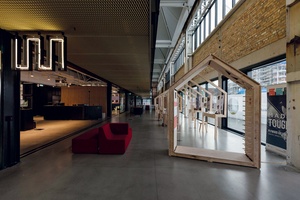
Over at Warren and Mahoney’s new base on Pakenham Street, more virtual reality was on offer with a walk-through, complete with vertigo-inducing banks of escalators, showcasing one of the practice’s recent office proposals. The WAM office impressively occupies two floors of the former Mason Brothers heritage building and is part of the regeneration of Wynyard Quarter. The offices open onto a common lane along the ground floor, where WAM hosted an exhibition of student work from Unitec, which was presented within a purpose-made CNC plywood framework.
Connecting the two offices floors, the grand wooden presentation staircase was packed out for that evening’s gig. Billed as PowerPoint Karaoke, the event was actually a standard PechaKucha. Highlights were a young fellow from WAM, fresh with the joys of his new medium-format film camera, and Maria Hosking from Strachan Group speaking about the collaborative prefabrication project that they are undertaking with Architecture+Women·NZ for a building on Kaikoura Island in the Hauraki Gulf.
On the last Saturday of the festival, six architectural practices in Auckland and one in Whangarei opened their doors to large numbers of engaged members of the public, and not a few curious architects. Keynote speakers Catherine Johnson and Rebecca Rudolph from Design, Bitches (it’s design, bitches….) entertained at the Mercury; and Sir Harold Marshall, distinguished former Professor of Architecture at the Auckland School updated the audience on his fascinating career in the final Fast Forward lecture.
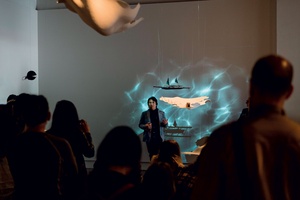
Various other exhibitions and tours were staged around the city, notably the Future Islands exhibition, an excellent opening experience for the new Object Space Gallery, now in Rose Road, Ponsonby, in a building superbly recreated by RTA studio.
Congratulations to the team who created a formidable series of events. As noted, along with celebrating architecture, it brought understanding of design and architecture to a wider audience. Creating opportunities for architects to engage in the hugely pressing issues of housing, homelessness, affordability and city making within an openly public forum could be considered for a future event.
nzia.co.nz/festival-of-architecture
The Festival of Architecture was made possible with the generous support of dormakaba, principal sponsor of the festival, and GIB, sponsor of the international keynote speakers.

